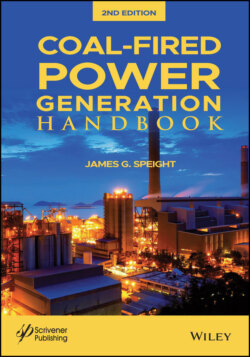Читать книгу Coal-Fired Power Generation Handbook - James Speight G., James G. Speight - Страница 35
2.3.2 Banded Structure
ОглавлениеReference has been made elsewhere to the three general classes of coal: banded coal, non-banded coal, and impure coal (White, 1911; Thiessen, 1931) and further discussion is not warranted here. Nevertheless, the fact that many types of coal have a laminated structure consisting of layers which may vary considerably in thickness, luster, and texture has led to an attempt to classify coal by virtue of these differences (Table 2.3).
Since this banded structure persists in all types of coal from lignite to anthracite (although it is most obvious in the bituminous coals), there may, of course, be some merit in such a classification (Stach et al., 1982). However, the failure of such a classification system to take into account the elemental composition of the coal is a serious deficiency. Indeed, a similar statement may be made relative to all of the classification systems that involve the physical appearance of the coal. To all but the well initiated, there is little, if any, difference between one piece of coal and another. Therefore, classification systems which rely on a physical property are not only difficult to rationalize but are even more difficult to accept.
Furthermore, the wide variation in the elemental (ultimate) composition of coals, irrespective of the banded structure, is the major objection to classification by physical methods alone.
